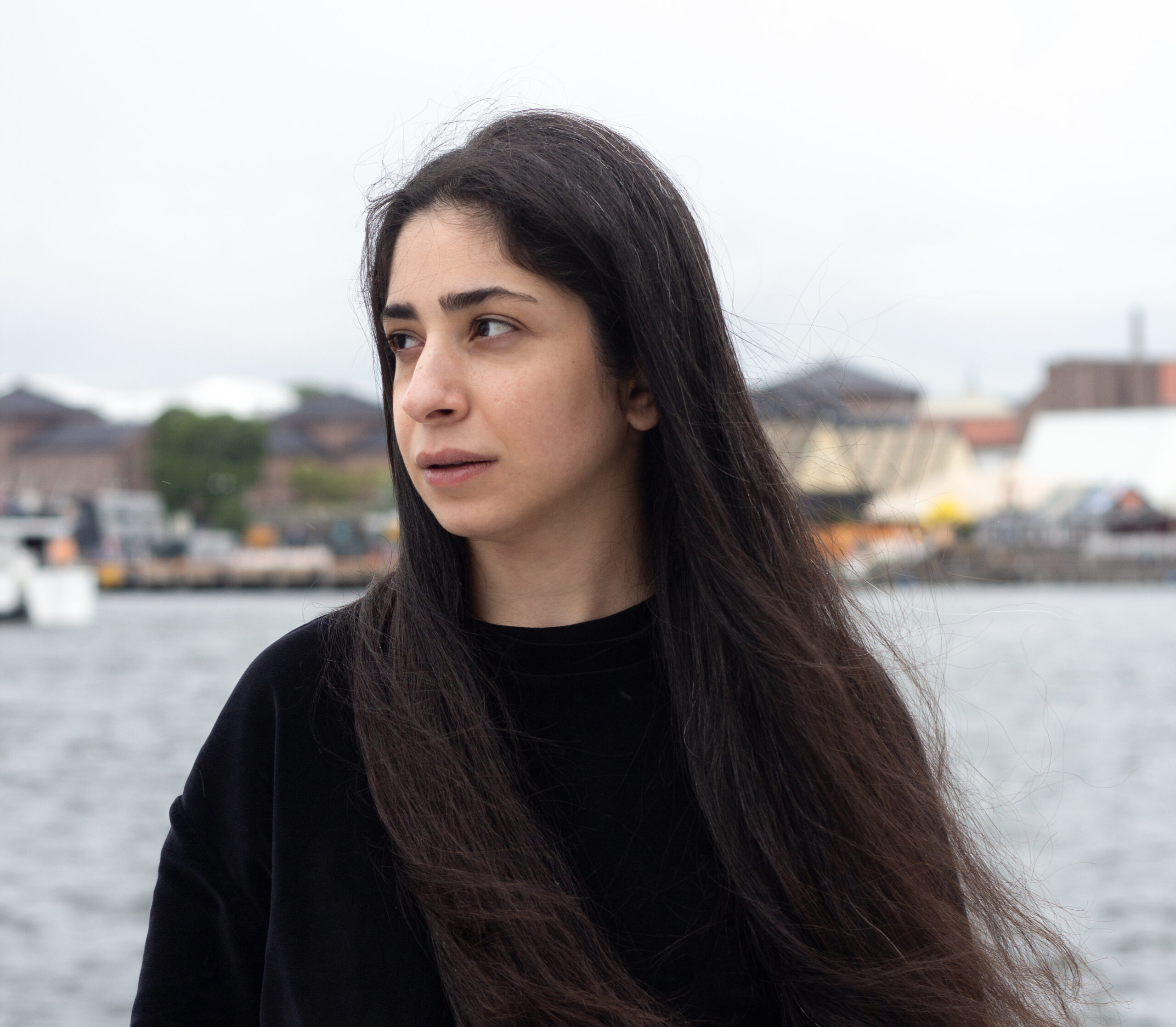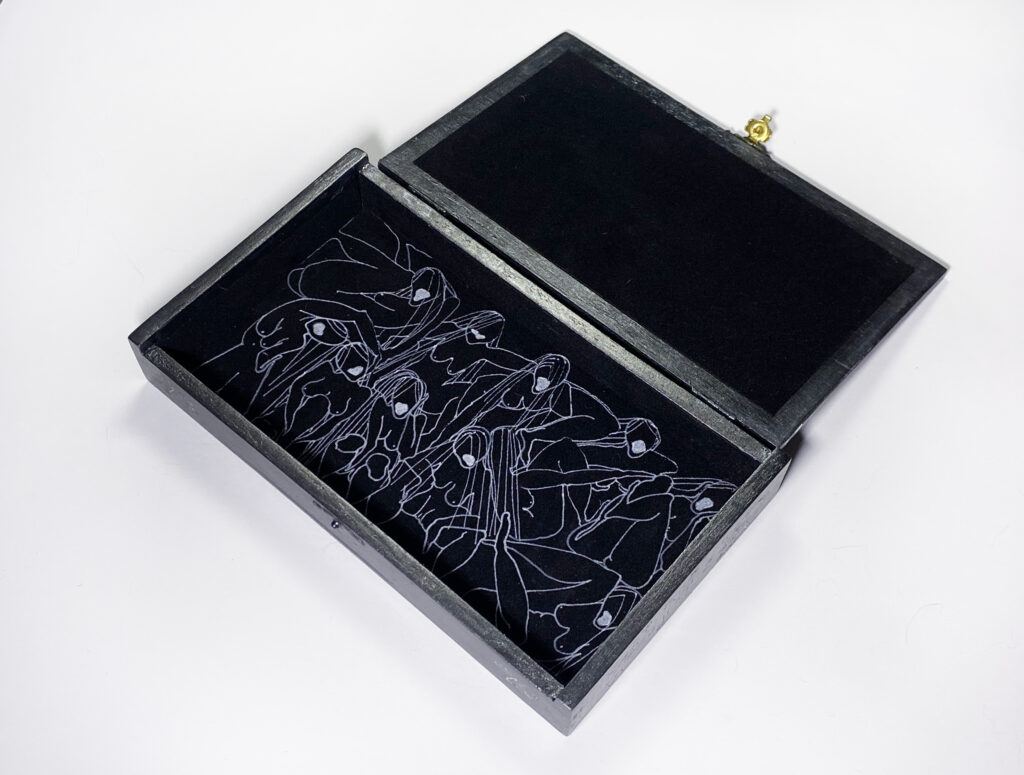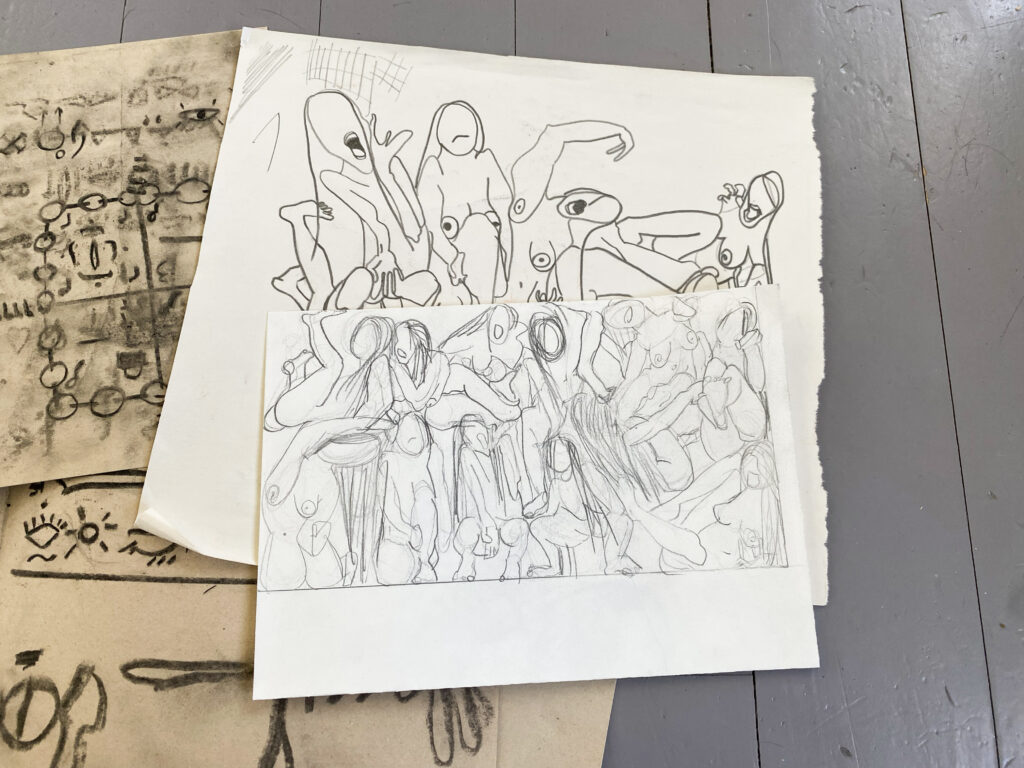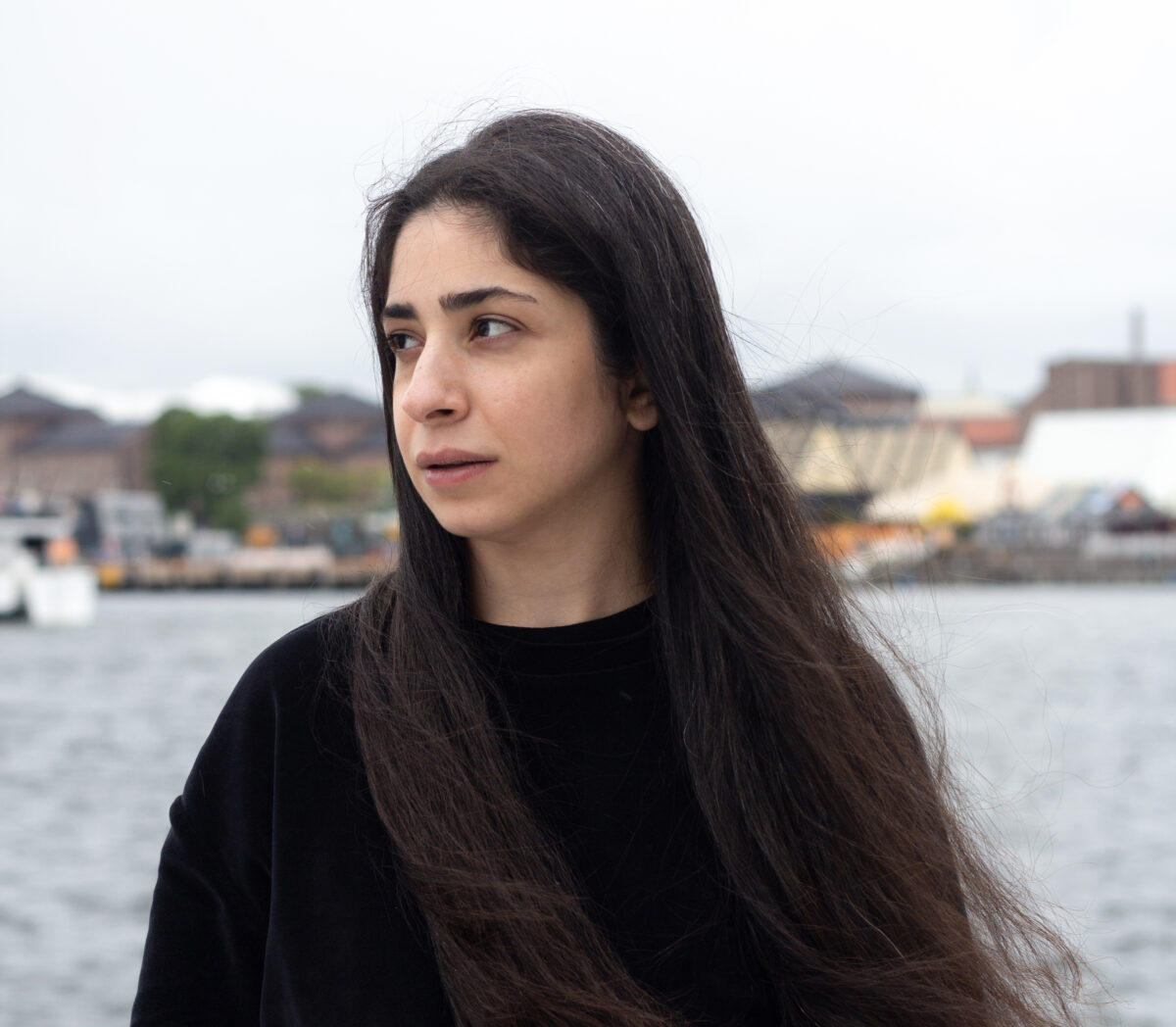Saba Pouyeshman: Rewriting the spell, from suppression to imagination
Written by Kate Ngan Wa Ao

Saba Pouyeshman was born in Karaj, Iran, in 1997 and grew up in a large family. She discovered her passion for acting at a young age, often dressing up and improvising for hours, creating characters. Acting has been a way for her both to connect with the world and to disconnect from it when it becomes overwhelming; it creates a unique safe space for her.
Saba studied Cinema and Screenwriting at university in Iran, but her passion for acting never faded. She eventually pursued a career in theater. After working as an actress for nearly a decade, her journey was challenged by the harsh realities of censorship and the suppression of creative freedom. While working in Iranian theater, she experienced firsthand how freedom of expression was often manipulated as a tool of propaganda. Performance content and dress codes were strictly controlled, making it increasingly difficult for Saba to continue her work.
— When I was working in the theatre in Iran, I was often asked and forced to change my clothing not based on my character’s story, but solely to comply with the Islamic Republic’s strict dress codes, covering my hair and any exposed skin. I was constantly in conflict with myself while performing; I felt like a liar. The more I acted, the more suffocated I felt. Saba says.
— I developed a deep anger toward the endless, senseless limitations placed on artistic freedom. These obstacles not only affect individuals, but they also shape narratives, enforce propaganda in art, and destroy valuable cultural expression. I stepped away from acting, overwhelmed by depression. Saba recalls.
“For a couple of years, I felt disconnected from all art forms. Being an artist under censorship and suppression often felt hopeless. But thankfully, art is more powerful than any dictatorship; it is part of what makes us human and cannot be silenced so easily. Slowly, the spark within me was reignited through a new artistic practice.“
— Saba Pouyeshamn

Where Art Could Begin Again
Saba and another multidisciplinary Iranian artist, Pouya Pour-Amin, participated in Safemuse’s Safe Haven artistic residency program in Hvitsten in the spring of 2024 together, organised in collaboration with local partner Hvitsten Salong. Later, they spent the second part of their residency in Oslo, in collaboration with Nordic Black Theatre.
In Tehran, where she lived in an apartment surrounded by some hostile neighbours who supported the regime, Saba was under constant threat and anxiety, and was close to losing the strength to be an artist. But after moving to Hvitsten, she found herself inspired by the landscape and nature, and since then, she has spent nearly every drawing and painting.
“From Tehran to Hvitsten, from a small, tense apartment to a beautiful house in the woods, right beside the fjord. From hostile, watchful neighbours to the amazing, open-hearted, and warm community of Hvitsten. This shift made me want to be bold and free in my art again. I was finally able to relax and create, says Saba. “
— Saba Pouyeshman
Saba’s drawings were exhibited at Hvitsten Salong in 2024. The residency coordinator at Safemuse and the director of Hvitsten Salong, Jon Lundell, welcomed her and Pouya to their local community. He recalls:
— Saba, who has a multidisciplinary background, worked in several different art forms at Hvitsten Art Haven. She has a prominent role as an actress in the making of the play Prison Episodes together with Pouya Pouramin, and she has also been exploring and working more comprehensively with drawings.
— Both Saba and Pouya were a delight to have in Hvitsten! It is not always easy to come into a new reality in a small community like this, but their personalities, presence, warmth, and genuine interest in other people made it a simple joy to work with and facilitate.

Reborn in Dark Mytholog
After a temporary farewell to acting, Saba became interested in the theoretical side of art, particularly art history. She studied The History of Modern Art and The History of Modern Sculpture independently, and researched motifs in Iranian fabrics and pottery, as well as modern painting in Iran. These studies of visual traditions and symbolism, especially those rooted in mythology, have become the main inspiration for her artistic work now.
During her artist residency in Norway, Saba developed a new way to connect her past and present, merging performance and visual art into a distinctive practice. She once again dressed up as characters, but this time used her body and gestures not only as expressive tools, but also for mark-making, storytelling, and reclaiming her voice through the whole process of image-making.
— For example, in Fairy Invoker, I draw from Iranian folklore about the Fairy Caller, who traps fairies for good or bad purposes, some to save the world, others to destroy it. I imagine myself as one of these trapped fairies, each carrying different emotions and stories: fleeing, struggling, angry, calm, or meditative. I set up my camera to capture my movements and gestures as those fairies. Later, I drew the characters I once created and performed, Saba says.
— This is where my artistic practice lives, connected with storytelling, memories, and folklore. I want to explore what lies between reality and the supernatural; the visible and the invisible; the spoken and the unspoken. My performances are based on imagination, ancestral ghosts, childhood fears, and playful spirits. For me, life is aligned with magic, talismans, jinns, demons, fairies… Saba says.


Myth, Wonder, and New Beginnings
Saba has many dreams to fulfill and continues to look forward. Now being in Norway, she is excited to learn more about Norse mythology, not just through books, but through the landscape, people, and living traditions. One of her artistic goals is to explore stories from the dark realms of mythology through different artistic media. She is deeply drawn to the mysterious, magical, and sometimes eerie elements of folklore and believes these stories hold powerful potential, not to frighten, but to inspire imagination, strength, and curiosity. Her goal is to create work that speaks to a raw and honest sense of wonder, inviting deeper questions and new ways of thinking.
— Mythological stories have the power to plant a seed of doubt, and I believe doubt is a beautiful and essential part of life. It’s often the first step toward thinking differently, asking deeper questions, and ultimately creating something new. Doubt opens the door to wonder, and through my art, I want to offer that door to others, says Saba.
Since July 2025, Saba has joined Safemuse as part of the Aspirant Scheme, a fellowship supported by Arts Council Norway. The programme will provide her with opportunities to gain experience in the arts and culture field, while also supporting her development as an artist. She will be working with Safemuse as well as other organisations and festivals, including Hvitsten Salong, Nordic Black Theatre, Empowering Voices, and JM Norway, with exciting possibilities for new collaborators to join along the way.
We are very much looking forward to continuing our collaboration with Saba and witnessing how she shares her magical spirit with the world.
